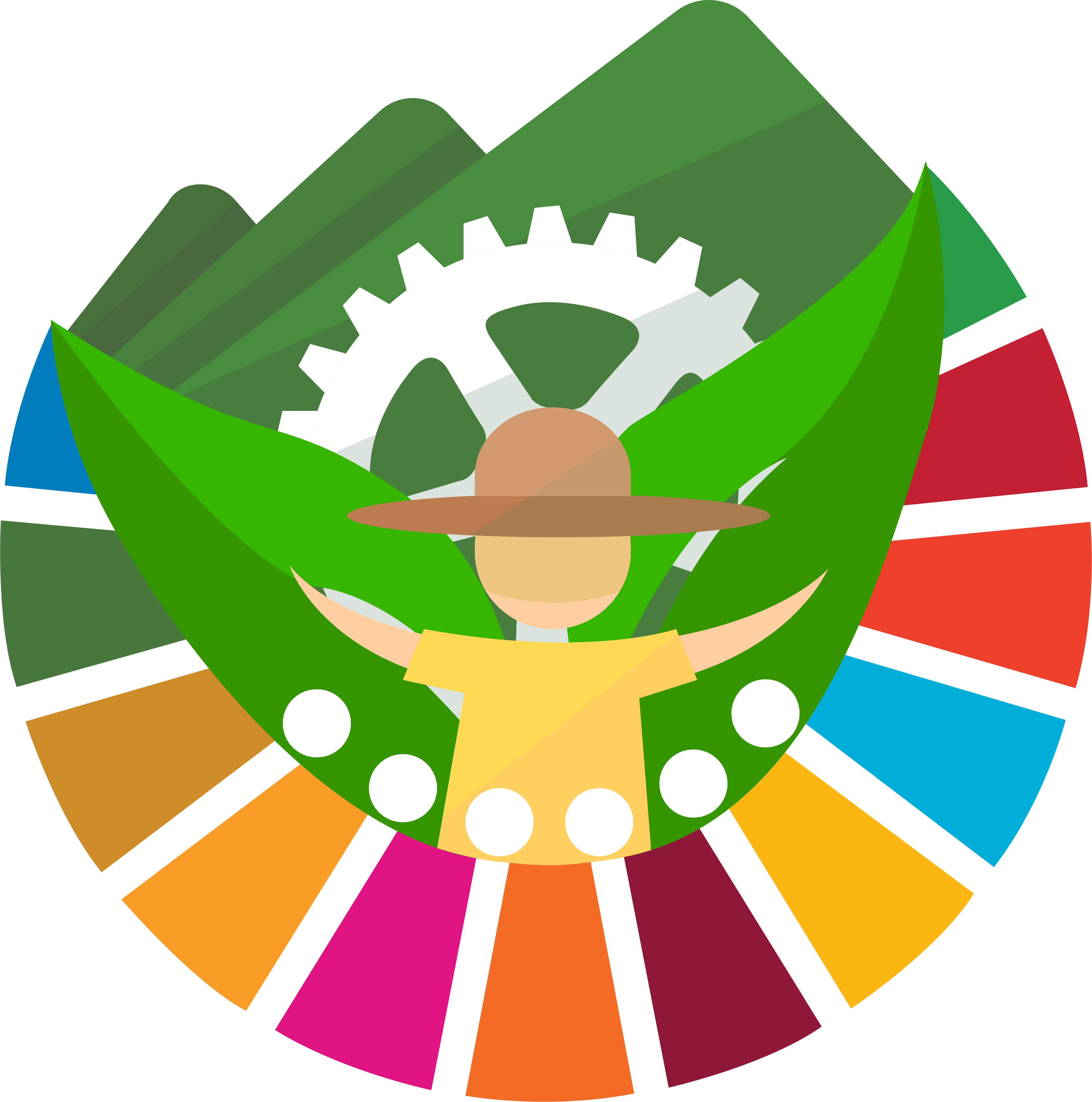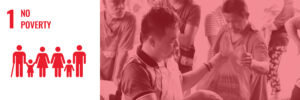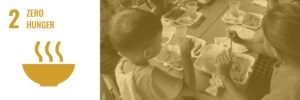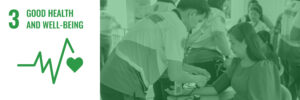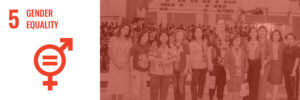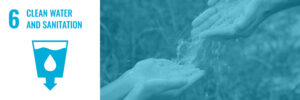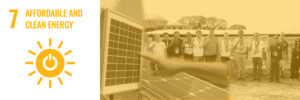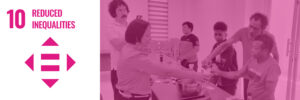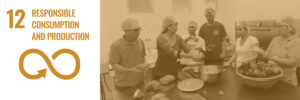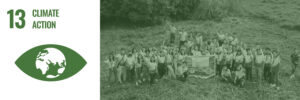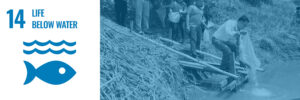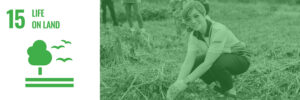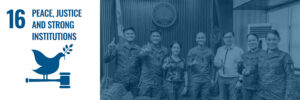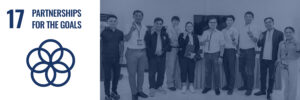2023 – Research | SDG 3 – Good Health and Well-Being
Technical Research Category
Establishment of Ex-Situ Germplasm and Conservation of Endemic and Native Fruits of the Philippines under Isabela Climatic Condition
Proponent: Melchor C. Madrid
Abstract
The ex-situ milldam of endemic and indigenous fruit crops of the Philippines were established at ISU Echague Isabela, which is composed of 20 species. Eight rare fruit species in the Angadanan and San Guillermo were identified, morphologically characterized. and collected. These rare fruit species are namely. “Ariwat” (Terrastigma harmandii), “Banay”(Alpinia elegans), “katmon” (Dillenia Philippinensis), “Lubeg” (Syzygium lineatum). “Hililigak or “hilagak” (Uvaria rufa). Tagat-ay (Melastoma malabathricum), wild pili (Canarium spp.), and piling liitan (Canarium luzonicum). Ariwat is a woody vine growing, and the leaves are usually 3-5. but sometimes 7 leaflets, and used as a souring agent. Fruit is smooth. dark yellow when ripe, and rounded, with a fruit weight of 43.47 g per cluster. Banay is a vigorous herbaceous plant with yellow-colored fruit. The katmon is found in low- to medium-altitude forests, which can be used for landscaping, and the fruits as a souring agent. Lubeg is a medium-sized fruit tree that typically grows to a height of 5-8 meters. The fruits are berries with 22.11 g each and have an obolid form. Hiligak is a kind of vine, and the fruit is clustered, with 18 fruits. Tagat-ay is an erect shrub that reaches a height of 3 meters. The fruits are edible and sweet when it is ripe. Wild pili has 14.86 grams of matured fruit, which is smaller than Canarium ovatum and piling-Iiitan, with a fruit cross-section of heart shape and a fruit weight of 48 g utilized by the folks in the areas as liniment due to its menthol content.
Development of Palleted Biochar as an Organic Amendment for Improved Soil Quality and Productivity
Proponents: Artemio A. Martin, Jr., Batiana M. Mendoza
Abstract
Environmental challenge like global warning prompted the agricultural sector the need in develop carbon-rich materials such as biochar to improve soil fertility and crop productivity. Biochar from the 69:40 mixture of decomposed poultry manure and biowaste materials at– rice hull, corn, cobs, coconut shell, sugarcane bagasse and peanut shell – were produced thru pyrolysis. Biochar is transformed into pellets with corn starch as binder for ease of handling and application Biochar products were alkaline (pH 9.73 :0 10 39). high organic matter (38 77- 52.30 percent), and organ: carbon (22 49 — 78 13 percent). The total nitrogen ranged from 1,94 to 2 62 percent, available phosphorus is 2.88 – 3.75 percent, and potassium is 3.29 – 4.50 percent. NPK of the five (5) biochars is from 8.64 to 9.90, considered as organic. C/N ratio ranged from 11.21 – 11.60 C g-1 N considered narrow, hence preferable and acceptable. The pelleted biochar contains micronutrients with Cu (31.88-44.69 ppm), Zn (141 – 415 ppm), Mn (307 – 358 ppm) and Fe (748 – 1036 ppm). Soil pH significantly improved with biochar application, increased soil organic carbon, nitrogen, phosphorus and potassium contents of soils. Biochar products as organic soil amendment significantly improved yield of rice, corn, eggplant and honeydew, while indicated high potential as nutrient supplement to the recommended rate of inorganic fertilizer in corn, pepper, carrot and radish. Biochar production is a waste management strategy, providing farmers and rural households inexpensive means to tum biomass wastes into quality organic fertilizer (pelleted biochar) to sustain them organic farming activities.
Upscaling of Postharvest Processing and Shelf-Life of Oyster Mushroom (Processing of Mushroom Loaf)
Proponents: Melody E. Lim, Arlene L. Remigio, Ma. Leonila G. Cabbacan
Abstract
This study presents the results of a sensory evaluation conducted to assess the attributes of oyster mushroom gyoza, with participation from 50 evaluators. The gyoza were evaluated based on five sensory attributes: appearance, aroma, texture, taste/flavor, and general acceptability, using a 1-9 hedonic scale where 1 indicates “dislike extremely” and 9 indicates “like extremely.” The results demonstrated that the gyoza had a mean appearance score of 7.6, indicating favorable visual appeal. Aroma received a mean score of 7.2, suggesting general appreciation but less impact on the overall experience. The texture was highly rated with a mean of 7.8, showcasing a successful combination of the soft wrapper and tender filling. The taste/flavor emerged as the standout attribute, achieving a mean score of 8.3, reflecting strong satisfaction attributed to the umami-rich filling of the oyster mushrooms. The overall acceptability score of 8.0 confirmed that the gyoza were well-liked by the evaluators. The findings highlight the strong visual appeal, favorable texture, and particularly satisfying flavor of the oyster mushroom gyoza, establishing them as a successful plant-based alternative to traditional meat-filled dumplings.
Upscaling of Postharvest Processing and Shelf-Life of Oyster Mushroom (Processing of Mushroom Steamed Dumpling)
Proponents: Norvelyn B. Bautista, Ma. Leonila G. Cabaccan
Abstract
This study presents the results of a sensory evaluation conducted to assess the attributes of oyster mushroom gyoza, with participation from 50 evaluators. The gyoza were evaluated based on five sensory attributes: appearance, aroma, texture, taste/flavor, and general acceptability, using a 1-9 hedonic scale where 1 indicates “dislike extremely” and 9 indicates “like extremely.” The results demonstrated that the gyoza had a mean appearance score of 7.6, indicating favorable visual appeal. Aroma received a mean score of 7.2, suggesting general appreciation but less impact on the overall experience. The texture was highly rated with a mean of 7.8, showcasing a successful combination of the soft wrapper and tender filling. The taste/flavor emerged as the standout attribute, achieving a mean score of 8.3, reflecting strong satisfaction attributed to the umami-rich filling of the oyster mushrooms. The overall acceptability score of 8.0 confirmed that the gyoza were well-liked by the evaluators. The findings highlight the strong visual appeal, favorable texture, and particularly satisfying flavor of the oyster mushroom gyoza, establishing them as a successful plant-based alternative to traditional meat-filled dumplings.
Extension
PHYSICAL FITNESS DEVELOPMENT PROGRAM FOR THE STAKEHOLDERS OF THE CUBAG INTEGRATED SCHOOL
A person’s degree of physical fitness has a significant impact on their overall development, especially in educational environments. This abstract presents a comprehensive physical fitness development program created especially for the stakeholders of the Cubag Integrated School. The program aims to meet the diverse needs of children, teachers, parents, and the community at large by promoting physical exercise, health awareness, and a culture of fitness. Its goals were to give participants the chance to actively participate in activities that lead to an improved quality of life; to instil in program participants a sense of health consciousness; to notify them of new regulations and changes to promote originality and consensus; to fortify the initiatives that allow Cubag Integrated School residents to play sports also to encourage good sportsmanship and unity among recipients, irrespective of their gender, status, age, color, or ethnicity. The proponent spoke with the campus extension director, dean of the college, and coordinator of college extensions about its specifics. After the initiative was approved, the proponent worked with the Cubag Integrated School to arrange the details and potential implementation partner. However, safety precautions and standards continued to be rigorously adhered to, including the use of face masks and face shields as well as social distancing measures up to a 1.5-meter distance. To get the full benefits of the program, Cabagan, Isabela locals were urged to participate in sports and exercise on a regular basis. With continuous operation of the program under SDG 3: “Good health and Well-being” which goal is to guarantee healthy lifestyles and advance everyone’s wellbeing, regardless of age, the program was able to train students from different level enables them to produce their own competing team, still following protocols in achieving the common goal. A person’s health and well-being are crucial from the very beginning of their life. The program’s monitoring and evaluation procedures are crucial for assessing its effectiveness and implementing the necessary changes. Surveys, fitness assessments, and qualitative feedback will all be used to monitor changes over time in the attitudes, behaviors, and physical health markers. The ultimate goal of the Physical Fitness Development Program for Cubag Integrated School stakeholders is to enable people to take charge of their own health and wellbeing. The program strives to develop a generation of people who are resilient and physically healthy in addition to being academically strong by creating a friendly and encouraging atmosphere that prioritizes physical fitness.
PHYSICAL FITNESS DEVELOPMENT PROGRAM FOR THE STAKEHOLDERS OF THE CUBAG INTEGRATED SCHOOL
Martina R.Peñalber, Myleen R. Corpuz, Mila R. Andres, Jhamie Tetz I.Mateo, Markhipolito P. Galingana,Rikka Klaire V. Galinggana
The extension project was an offshoot of the research output of the project team about product development and recipes of the College of Education (CEd)with the undergrad and grad thesis students in Bachelor of Technology and Livelihood Education (BTLEd) and Master of Arts in Teaching major in Home Technology (MAEd-HT). These research outputs became the instrument of this extension project. The project team developed and produced the following products from their research outputs: Cassava-based Sagip, Corn-based Sagip, and Rice-based Sagip, fortified with Cacao Pod Husk power(CPHP) research output of the ISU-Cagayan Valley Cacao Development Center. The output contain nutrients that mitigate Malnutrition.
The objectives of this project were: (1) Determine the demographic profile of the adopted Barangay’s of ISU BIDANI-PNEA; (2) Conduct capacity building on product demonstration for adopted Barangay’s ; (3) Conduct capacity building on product’s basic labeling, packaging, and costing (ROI); (4) Utilizing the produced product, Sagip Nutri-Pack, for Recipe development; (5) Establish rolling stores in the adopted Barangay’s of ISU BIDANI and (6) Determine the number of cases of Malnutrition in the adopted Barangay’s.
The project was able to develop (8) IEC Materials (Recipe/Brochures) developed.(1) IEC Materials was Copyrighted (Recipe/Brochures. Developed (3) Products all fortified with Cacao Pod Husk Power: Cassava-Based Sagip, Corn-Based Sagip, and Rice-Based Sagip.(4) Training designs were crafted; (4) Modules were developed). In terms of Capacity building, 20 males and 50 females were trained and capacitated ; 14 males and 8 females malnourished children were identified. In totality, there were (3) Capacity buildings conducted and two (2) MOU’s forged.
To its impact on the economy, a partnership was established between Isabela State University ,UPLB and LGU-Echague with the Barangay Salvacion, as our 1st pilot from the 15th adopted Barangay’s as the way-forward in Echague, Isabela. Innovation and Product Development led to livelihood for the residents; Rolling stores became an excellent source of livelihood and created jobs for the residents. The knowledge and Skills the residents acquired increase their potential to engage in livelihood training. Increasing residents’ knowledge of product creation leads to livelihood creation in the Barangay. Improve knowledge and skills in product packaging and costing. Utilizing the product helped mitigates Malnutrition. The development of products increases the demand for a larger workforce. Hence, more livelihood was created. Additional income from livelihood allows the residents to earn enough to buy food for the family, especially the children. Economic Impacts. With the creation of more livelihood, job opportunities also increase. Hence, the employment rate also increases. Putting up a Rolling Store means more income generation. Hence, revenue likewise grows, aligned with the SDG no.8 Decent work and Economic Growth
PSYCHOLOGICAL FIRST AID TRAINING-WORKSHOP: A RESPONSE IN THE NEW NORMAL
Proponent: Beverly Gay N. Cambri
Psychological First Aid (PFA) is a vital component of community-based mental health support, particularly in the aftermath of crises or disasters. The PFA training workshop aimed to equip the participants with the skills and knowledge to address the mental health consequences of responding to disasters and public health emergencies; deliver psychological and social support for males and females in crisis situations; and simulate the three action principles of ‘Look, Listen and Link’. PFA training-workshop fostered knowledge and understanding of psychological first aid principles, which contributes to achieving SDG 4. The workshop, conducted as part of a larger community resilience-building initiative, incorporated a multidisciplinary approach to understanding the psychological and emotional needs of individuals affected by various stressors, ranging from natural disasters to pandemicrelated challenges. It integrated interactive discussions, case presentations, sharing of personal experiences and group activities that enhanced the practical applications of PFA skills. By promoting mental well-being, it contributes to achieving SDG 3, which aims to ensure healthy lives and promote well-being for all at all ages. The Psychological First Aid training-workshop was conducted on February 15-16, 2023 to forty Barangay Heath Workers and Nutrition Scholars from twenty barangays of Sta. Maria, Isabela. The training-workshop provided these local frontline workers with the knowledge and skills necessary to provide immediate emotional and psychological support to community members during times of distress. A case presentation and feedback giving were conducted last May 19, 2023 to the BHW and BNS participants. The participants shared their experiences on how they were able to assist and help their constituents using the principles of Psychological First Aid. Psychological First Aid training-workshop is a vital tool for addressing multiple Sustainable Development Goals. The training-workshop focused on helping and assisting the constituents of Sta. Maria, Isabela. It helped build resilience within communities, making them better prepared to respond to crises and ultimately advancing SDG 11, which aims to make communities and human settlements inclusive, safe, resilient, and sustainable.
WINGS OF CHANGE: BOOSTING PRODUCTIVITY THROUGH POULTRY PRODUCTION
Proponent: Lilibeth S. Languido
The Isabela State University San Mariano Campus has been well known in terms of Agricultural production from crops to livestock production since 1978. Poultry production is one of the focusses of the institution since the commodity is considered as one of the quickest productions that gives return/ income and requires less capital and labor. In 2021, the campus is one of the lucky recipients of the Poultry Multiplier Farm worth Five Million (5,000,000.00) under the Bayanihan II program of the Department of Agriculture Regional Field Office 02, which aims to alleviate the effect of the Covid-19 pandemic on the affected constituents (Displaced workers) of the community. The University was given the task to produce quality breeders (Rooster and Hen) and chicks, that were dispersed to qualified recipients for upgrading purposes. A repayment scheme was also implemented in which farmers were obliged to repay 20 chicks one year after the receipt of the animals to ensure the continuity of the project. At present a total of eight hundred ninety-six (896) heads have been dispersed in the municipality of San Mariano, with twenty-nine (29) recipients. Eighteen (18) men, and eleven (11) women were empowered through the series of trainings conducted, an increase in population of the Native chicken by the recipient of Brgy. Dibuluan, San Mariano, Isabela at about 180% based on the data was noted and an additional income amounting to 6,968 pesos was reported by various beneficiaries. The project is also aligned with the Sustainable Development Goals addressing SDG nos. 1,2,3, 4,5,8,10,12,15 and 17, in which impacts on the beneficiaries may be measured.
